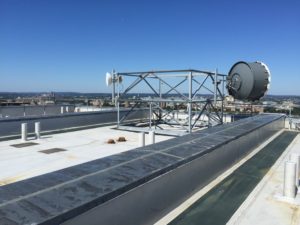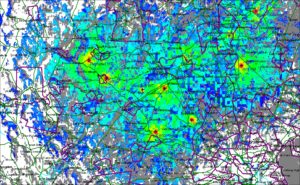This blog is Part 3 of an 11-part series discussing the NERAC Council’s initiatives over the last 12 years specific to each of the public safety disciplines represented on the Council. Check back every 2-3 weeks for new posts!
The NERAC Council is committed to the enhancement and expansion of interoperable public safety communications in the region, and has demonstrated this commitment over the years through a wide array of investments into equipment upgrades, system expansions, and sponsored trainings. Chris Ryan, Deputy Director of the Essex County Regional Emergency Communications Center (ECRECC), is the public safety communications representative on the NERAC Council, where he serves as co-chair of the Interoperability Committee and guides their implementation of comprehensive regional public safety communications projects.NERAC has made significant investments into the major command and control systems in the region that first responders rely upon. The Boston Area Police Emergency Radio Network (BAPERN) was developed by the Greater Boston Police Council (GBPC) to facilitate radio communications between law enforcement agencies and is used on a daily basis for regional law enforcement notifications and mutual aid coordination. NERAC has worked to expand BAPERN both geographically and to multi-discipline users. In 2011, NERAC provided BAPERN with voting receiver equipment at two new sites in Andover and Tewksbury to address coverage issues in the Merrimack Valley, and then in 2012, expanded and improved the coverage of BAPERN’s Area Wide 3 and 4 channels in their Northwest District through the addition of equipment at seven (7) new sites. Additionally, NERAC has provided public works and public health departments throughout the region with portable radios pre-programmed with BAPERN channels to enable them to listen to and participate in these critical communications.
NERAC has also invested substantial funding into Fire District 5, 6, 14, and 15 communications. Through these investments, the Council has been working to connect each District’s Control Point to the statewide CORE controller in Boston, which enables each Control Point to assume control of operations for any of the other Control Points in the event that their facility is damaged or has to be evacuated. This CORE connection also facilitates interoperability between the four Control Points, giving them the ability to communicate with each other directly during any type of incident that extends beyond the geographical boundaries of one fire district. NERAC has also worked to create microwave system connectivity to the main repeater stations used by each district to allow the Control Points to patch directly to the systems at the repeater level, which is much more effective and reliable than patching through the dispatch centers.
The Northeast Central Medical Emergency Direction (CMED) center is another command and control system in the region for which NERAC has provided support. Northeast CMED enables communications between hospitals and ambulances, and plays a critical coordination function in the response to mass casualty incidents in the region. NERAC has provided Northeast CMED with important infrastructure upgrades, including new repeaters, a new switch matrix, and a system recording device. NERAC has also built microwave system links for CMED to replace unreliable and costly T1 lines that their system previously depended on.
NERAC has also sponsored Communications Unit Technician (COMT) and Communications Unit Leader (COML) courses for emergency personnel that serve the region. These courses addressed the functions and responsibilities of the Communications Unit in the Incident Command System (ICS). At the COMT course, attendees learned to design, install, maintain, and demobilize on-scene emergency communications systems during a multi-jurisdictional incident response. Personnel that attended the COML course were trained to develop plans for the effective use of incident communications equipment and facilities, manage the distribution of communications equipment, and to coordinate the installation and testing of communications equipment. NERAC also created 7 COMT kits, which contain the equipment needed to enable COMT’s to effectively serve at large incidents, including programming cables, software, and other tools and supplies. These kits have been provided to the Beverly cache site, the Fire District 5, 6, 14, and 15 Control Points, Northeast CMED, and the Northeastern Massachusetts Law Enforcement Council (NEMLEC).
Through the Regional Cache Program, NERAC has also made supplemental communications equipment available to municipalities in the region for borrowing during emergencies and planned events. Each cache site is host to a supply of portable UHF radios, as well as a towable communications tower. This equipment can be borrowed by communities that expect to have a need for additional communications equipment due to a large, planned event or during an emergency for a small daily fee. Additionally, the Beverly cache site is host to a portable emergency operations center (PEOC), which can be used to set up and operate a standalone EOC.
For further information on the communications equipment available through the Regional Cache program, please visit the regional resources page on the NERAC website. Also, please download the NERAC Tactical Communications Information smartphone application for access to the Massachusetts Tactical Channel Plans.




